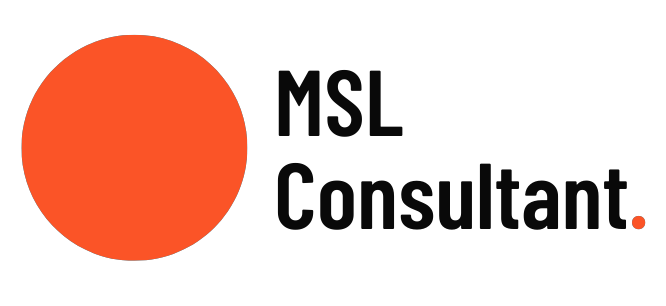5 Steps to a Successful KOL Meeting
You are feeling confident about your therapeutic area and product knowledge. You know the clinical trial data inside and out. You’ve just secured a face to face meeting with a tier one KOL, but WHAT DO YOU TALK ABOUT IN THE MEETING?
Don’t worry, here are my top five tips to ensure a successful KOL meeting.
Step 1: Define the objective of your meeting
Now that you’ve secured your first meeting, you must put in the preparation to ensure the meeting goes well. After all, you only get one chance to make a first impression and begin building that relationship with the KOL. If you are unprepared and waste the KOL’s time, they may not want to meet with you again.
Utilise this template to ensure you plan according. A more detailed template is available in the MSL Upskill Package.
KOL Name:
Places they work (hospitals, private practices, universities):
Areas of interest/publication topics:
Objective of the meeting (discuss this with your manager. Your objective may be non-specific e.g. develop a relationship with the KOL or specific e.g. invite the KOL to participate in advisory board):
Step 2: Plan on a smooth start to the meeting
There are a few simple things you can do to ensure the meeting starts off on the right foot.
Be clear on where exactly you are meeting the KOL. Is it in their office? Is it in the café at the hospital? Know the exact location and let them choose it when you reach out “e.g. Where exactly suits you to meet?”
Google an image of the KOL before you meet, so you will instantly recognise them.
When meeting someone for the first time, you need to quickly establish their personality type.
Your first question should be “How is your day going?”.
The answer to this question sets the tone for the meeting and will give you great insight into the personality type of the KOL. If they answer with one word, they will appreciate a direct, straight to the point communication style and you should adapt accordingly. If they start telling you about what they had for breakfast and their upcoming holiday plans, they are likely open for a chat and will appreciate you taking the time to chit chat before going straight into business.
You want to avoid awkward silences with your KOL. General questions which can be used to elicit insights from the KOL include;
Which conferences are you attending this year?
Have you had any experience with Product X and how was that experience? (Ask open as opposed to closed questions to stimulate conversation from the KOL).
What are the specific clinical guidelines that guide your decision making for disease Y?
Step 3 – Add value to the KOL
Ideally, you want to avoid meeting a KOL and interrogating them for 20 minutes. During the meeting, identify ways you can add value to the KOL. Discuss data that would be of interest to them.
If they ask a specific question and you don’t know the answer, find out for them (this gives you an opportunity to follow up with the KOL and demonstrates your commitment to medical education and quality use of medicines).
Step 4 – Know when to leave
KOLs are busy people. Read the signs, if they are looking at their watches and stating that they must leave soon, don’t keep them from their busy jobs. Thank them for their time and summarize any actions from the meetings. An example of an action would be the MSL sharing a clinical paper the KOL has requested.
Step 5 – Meeting notes
Depending on the company, you may be required to enter your meeting notes into a Customer Relationship Management (CRM) system, email a summary of the meeting to your manager or save notes on an internal spreadsheet. It is best to do this directly after a KOL meeting when the insights are fresh in your mind. Identify from your notes any insights that are “actionable”.
For example, if the KOL noted that Clinical Guidelines ABC are used to make treatment decisions, check if product X is listed. If not, this may need to be a medical project to get it updated and you can discuss this with your manager. This demonstrates your ability to not only get insights but also to think and act strategically.
